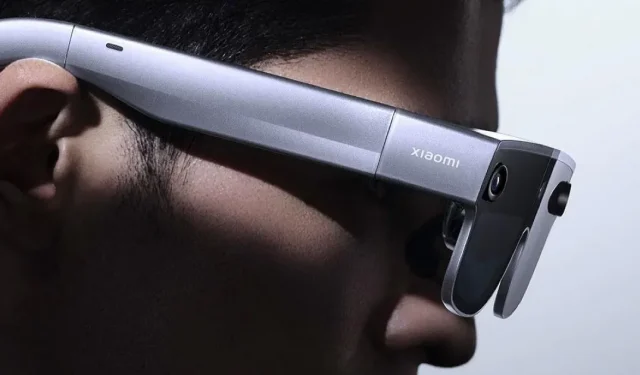Xiaomi showcases its new wireless augmented reality glasses

Xiaomi introduces the concept of wireless augmented reality glasses. The Wireless AR Glass Discovery Edition is very promising, but will it sell?
Augmented reality is one of the most exciting technologies, but we still wonder about its real usefulness, especially given the means available. That doesn’t stop tech companies from working on it. Xiaomi, for example, introduced its Wireless AR Glass Discovery Edition glasses, a very compact accessory that uses the same Snapdragon XR2 Gen 1 platform as the Quest Pro. The company explains that these oversized sunglasses offer a stylish solution for bringing the digital world into the real world without the need for a physical connection to a smartphone.
Xiaomi introduced the concept of wireless augmented reality glasses
Weighing just 126 grams, Xiaomi has used magnesium titanium alloy and carbon fiber components to make the device as light as possible. Inside is also a homemade silicon-oxygen anode battery, which Xiaomi says also keeps the weight down as much as possible. But being able to test glasses weighing more than 100 grams, it is felt in long sessions.
In terms of screens, these glasses include microOLED panels forming a pair of “free”prisms, so at pixel density your eyes won’t notice the dots. The company also clarifies that the loss in brightness will be less felt than with other screens placed this close to the eyes, and the maximum brightness can be as high as 1200 nits. For immersion, the front of the lenses is electrochromatic, allowing you to automatically adjust the brightness when you need to focus on the virtual world.
Xiaomi Wireless AR Glass Discovery Edition features lightweight yet durable magnesium-lithium alloy construction and carbon fiber materials. Its electrochromic lenses provide seamless access to reality and the virtual world with a single click. pic.twitter.com/FWANebc4Gp
— Lei Jun (@leijun) February 27
The Wireless AR Glass Discovery Edition is very promising, but will it sell?
Improved head tracking should also provide a new form of interaction when our hands are used to manipulate the virtual world. In the concept video, the user looks at the connected bulb and turns it off by pressing a virtual switch right on the accessory itself. Users will also be able, like the Minority Report, to browse the Internet and possibly use these features to improve productivity.
These advances are also part of Qualcomm’s efforts to advance its Snapdragon Spaces platform and thus advance XR devices. A Xiaomi product paired with a compatible device such as the new Xiaomi 13 promises low enough latency to not notice the absence of a cable. And the company explains that it is “working closely with developers to accelerate the advent of AR,”which is so important in some markets.
Unfortunately, we do not have information on the price or release date of these glasses at this time. While this is more of a concept than a finished product… To be continued!
Xiaomi Wireless AR Glass Discovery Edition with nearby eye retinal level display for AR glasses provides a truly immersive visual experience. In addition, our own development of Xiaomi AR Gesture Control makes it easy to manage virtual and real space. pic.twitter.com/EipqBWxkpW
— Lei Jun (@leijun) February 27
Leave a Reply